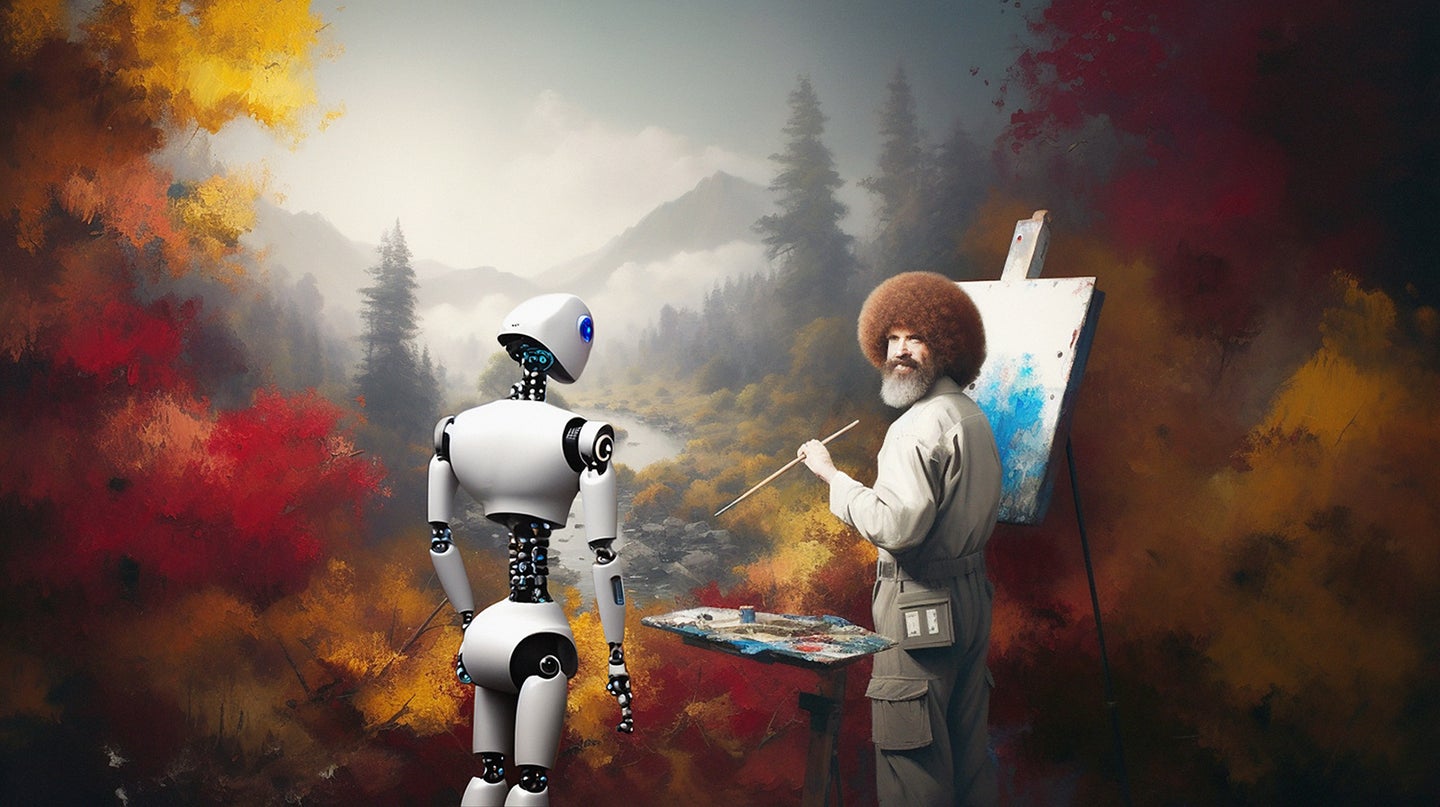5 surprising stats about AI-generated art’s takeover
In seconds, a computer may be able to generate pieces similar to what a human artist could spend hours working on.
HANDMADE ART can be an enchanting expression of the world, whether it’s displayed above a roaring fireplace, hung inside a chic gallery, or seen by millions in a museum. But new works don’t always require a human touch. Computer-generated art has been around since British painter Harold Cohen engineered a system, named AARON, to automatically sketch freehand-like drawings in the early 1970s. But in the past 50 years, and especially in the past decade, artificial intelligence programs have used neural networks and machine learning to accomplish much more than pencil lines. Here are some of the numbers behind the automated art boom.
Six-figure bid
In 2018, a portrait of a blurred man created by Paris-based art collective Obvious sold for a little more than $400,000, which is about the average sale price of a home in Connecticut. Christie’s auctioned off Edmond de Belamy, from La Famille de Belamy, at nearly 45 times the estimated value—making it the most expensive work of AI art to date.
A giant database
While an artist’s inspiration can come from anything in the world, AI draws from databases that collect digitized works of human creativity. LAION-5B, an online set of nearly 6 billion pictures, has enabled computer models like Stable Diffusion to make derivative images, such as the headshot avatars remixed into superheroic or anime styles that went viral on Twitter in 2022.
Mass production
A caricaturist on the sidewalk of a busy city can whip up a cheeky portrait within a few minutes and a couple dozen drawings a day. Compare that to popular image generators like DALL-E, which can make millions of unique images daily. But all that churn comes at a cost. By some estimates, a single generative AI prompt has a carbon footprint four to five times higher than that of a search engine query.
The new impressionism
Polish painter Greg Rutkowski is known for using his classical technique and style to depict fantastical landscapes and characters such as dragons. Now AI is imitating it—much to Rutkowski’s displeasure. Stable Diffusion users have submitted his name as a prompt tens of thousands of times, according to Lexica, a database of generated art. The painter has joined other artists in a lawsuit against Midjourney, DeviantArt, and Stability AI, arguing that those companies violated human creators’ copyrights.
Art critics
Only about one-third of Americans consider AI generators able to produce “visual images from keywords” a major advance, and fewer than half think it’s even a minor one, according to a 2022 Pew Research Center survey. More people say the technology is better suited to boost biology, medicine, and other fields. But there was one skill that AI rated even worse in: writing informative news articles like this one.
Read more about life in the age of AI:
- Will we ever be able to trust health advice from an AI?
- Why AI could be a big problem for the 2024 presidential election
- This AI program could teach you to be better at chess
- The first AI started a 70-year debate
- The logic behind AI chatbots like ChatGPT is surprisingly basic
Or check out all of our PopSci+ stories.

